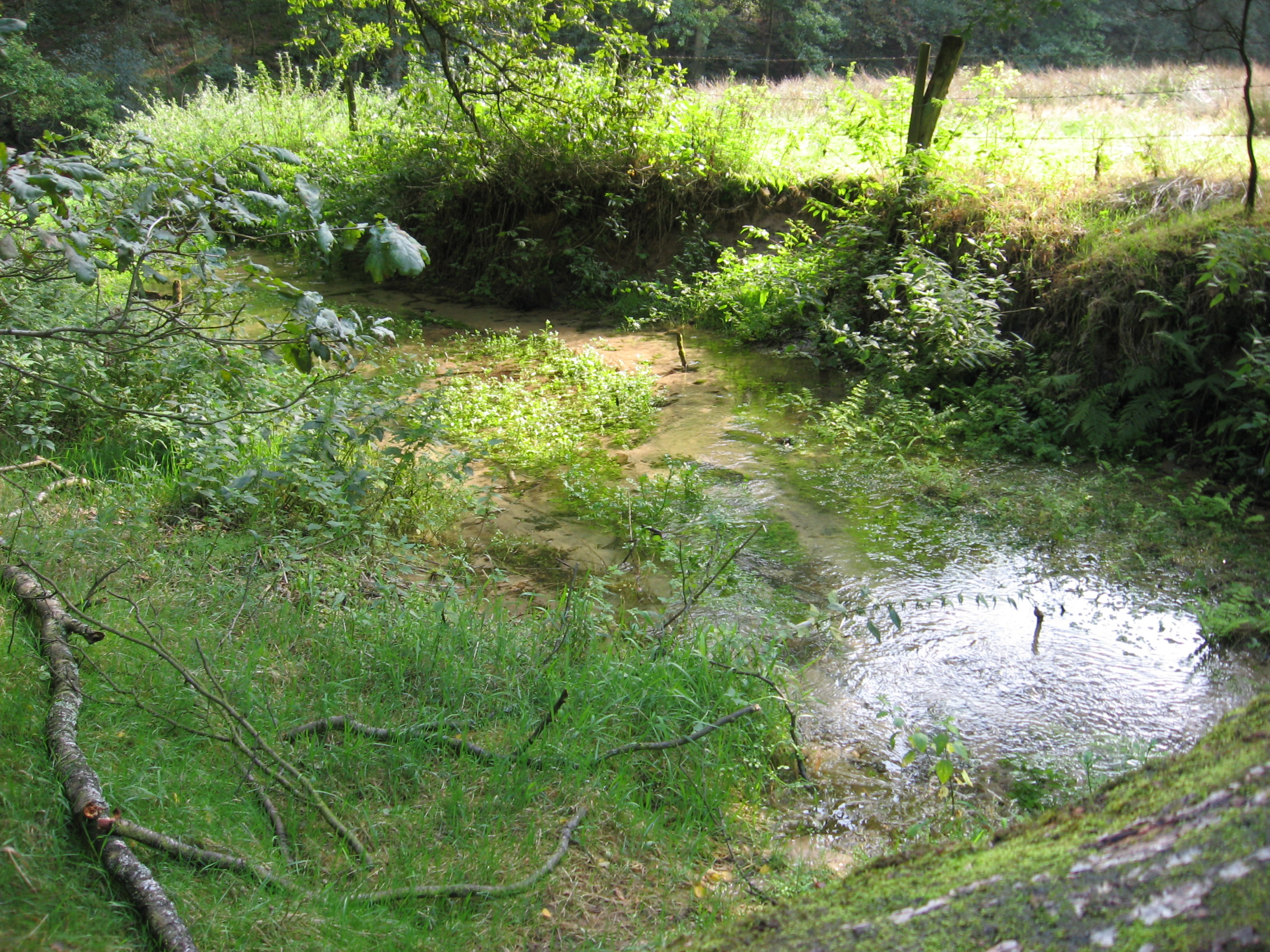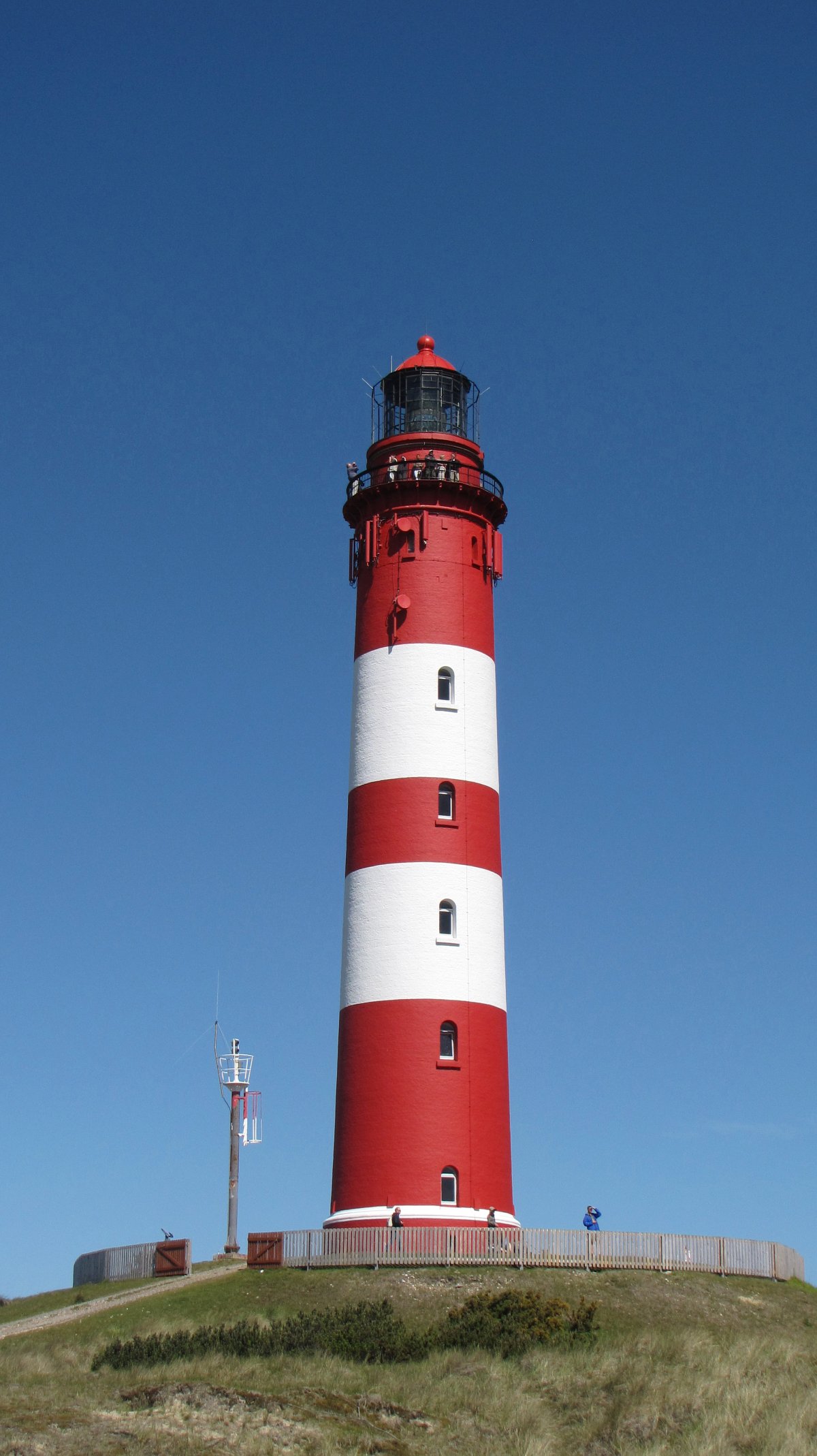|
Pilsum Lighthouse
Pilsum Lighthouse () was built in 1891 as a sector light for the Emshörn channel on Germany's North Sea coast. It is located on a dyke near the village of Pilsum in the municipality of Krummhörn. It guided ships through the narrow channel until 1915. During the First World War, its light was extinguished so that enemy ships could not navigate the route. After that, it was no longer needed, because the channel was changed. The height of the structure is 11 metres; the height of the light about sea level is 15 metres. Today, the tower is one of the best-known symbols of East Frisia. Film The tower grew in popularity as a result of the film ' by comedian Otto Waalkes. In the film Otto lives in the lighthouse. Although the lighthouse is one of the central scenes in ''Otto: The Alien from East Frisia'', for some reason the picture used on cinema advertisements and later on the inlays of the video and DVD editions was of the Westerheversand Lighthouse in Schleswig-Holstein, not t ... [...More Info...] [...Related Items...] OR: [Wikipedia] [Google] [Baidu] |
Sector Light
A sector light is a man-made pilotage and position fixing aid that consists of strictly delineated horizontal angle light beams to guide water-borne traffic through a safe channel at night in reasonable visibility. Sector lights are most often used for safe passage through shallow or dangerous waters. This may be when leaving or entering harbour. Nautical charts (paper and electronic) give all the required information. Sectors of colored glass (or plastic) are placed in the lanterns of these lights. The light will then show these colors when observed certain bearings. Bearings referring to a sector are given in degrees true, as observed from sea. Though the colors of the light will change, the characteristics will not. The change of color is not abrupt. The transition is made through an arc of uncertainty of 2° or greater. The colors that are used, are conform to the IALA Maritime Buoyage system that is designed by the International Association of Lighthouse Authorities: * wh ... [...More Info...] [...Related Items...] OR: [Wikipedia] [Google] [Baidu] |
Ems (river)
The Ems ( ; ) is a river in northwestern Germany. It runs through the states of North Rhine-Westphalia and Lower Saxony, and discharges into the Dollart Bay which is part of the Wadden Sea. Its total length is . The state border between the Lower Saxon area of East Friesland (Germany) and the province of Groningen (Netherlands), whose exact course was the subject of a border dispute between Germany and the Netherlands (settled in 2014), runs through the Ems estuary. Course The source of the river is in the southern Teutoburg Forest in North Rhine-Westphalia. In Lower Saxony, the brook becomes a comparatively large river. Here the swampy region of Emsland is named after the river. In Meppen the Ems is joined by its largest tributary, the Hase River. It then flows northwards, close to the Dutch border, into East Frisia. Near Emden, it flows into the Dollard bay (a national park) and then continues as a tidal river towards the Dutch city of Delfzijl. Between Emden and Delf ... [...More Info...] [...Related Items...] OR: [Wikipedia] [Google] [Baidu] |
Levee
A levee ( or ), dike (American English), dyke (British English; see American and British English spelling differences#Miscellaneous spelling differences, spelling differences), embankment, floodbank, or stop bank is an elevated ridge, natural or artificial, alongside the river banks, banks of a river, often intended to flood control, protect against flooding of the area adjoining the river. It is usually soil, earthen and often runs parallel (geometry), parallel to the course of a river in its floodplain or along low-lying coastlines. Naturally occurring levees form on river floodplains following flooding. Sediment and alluvium are deposition (geology), deposited on the banks and settle, forming a ridge that increases the river channel's capacity. Alternatively, levees can be artificially constructed from fill dirt, fill, designed to regulate water levels. In some circumstances, artificial levees can be environmental degradation, environmentally damaging. Ancient civilization ... [...More Info...] [...Related Items...] OR: [Wikipedia] [Google] [Baidu] |
Pilsum
Pilsum is a village in the region of East Frisia, in Lower Saxony, Germany. It is part of the municipality of Krummhörn. The village is located between Manslagt and Greetsiel. Pilsum was built on a ''warft''. The original version of the current Church of Pilsum was built around 1240. To the northwest of Pilsum is the 11 metres high Pilsum Lighthouse, located on a dyke on the Wadden Sea. Gallery Pilsumer Kreuzkirche-msu-2023-0I9A-6867-.jpg, Church of Pilsum Pilsumer Leuchtturm 2022.jpg, Pilsum Lighthouse PilsumerKBrauerei-msu-2021-7020-.jpg, Brewery Pilsumer Ziegelei msu 2018-0275.jpg, Former Pilsum brickworks Notable people * Andreas Bodenstein Andreas Rudolph Bodenstein von Karlstadt (148624 December 1541), better known as Andreas Karlstadt, Andreas Carlstadt or Karolostadt, in Latin, Carolstadius, or simply as Andreas Bodenstein, was a German Protestant Christian theologian, theologi ... (1486–1541), theologian References External links {{Authority control ... [...More Info...] [...Related Items...] OR: [Wikipedia] [Google] [Baidu] |
Krummhörn
Krummhörn is a municipality in the Aurich (district), district of Aurich, in Lower Saxony, Germany. It is situated near the Ems (river), Ems estuary, approximately 15 km southwest of Norden, Lower Saxony, Norden, and 10 km northwest of Emden. The municipality of Krummhörn comprises 19 villages (''Ortsteile''), and their official population as of 31 December 2008 is as follows: Notable people *Eggerik Beninga (1490–1562), a chronicler of the Frisians, was born in Grimersum. *David Folkerts-Landau (born 1949), German economist References Krummhörn, Towns and villages in East Frisia Aurich (district) {{EastFrisia-stub ... [...More Info...] [...Related Items...] OR: [Wikipedia] [Google] [Baidu] |
First World War
World War I or the First World War (28 July 1914 – 11 November 1918), also known as the Great War, was a World war, global conflict between two coalitions: the Allies of World War I, Allies (or Entente) and the Central Powers. Fighting took place mainly in European theatre of World War I, Europe and the Middle Eastern theatre of World War I, Middle East, as well as in parts of African theatre of World War I, Africa and the Asian and Pacific theatre of World War I, Asia-Pacific, and in Europe was characterised by trench warfare; the widespread use of Artillery of World War I, artillery, machine guns, and Chemical weapons in World War I, chemical weapons (gas); and the introductions of Tanks in World War I, tanks and Aviation in World War I, aircraft. World War I was one of the List of wars by death toll, deadliest conflicts in history, resulting in an estimated World War I casualties, 10 million military dead and more than 20 million wounded, plus some 10 million civilian de ... [...More Info...] [...Related Items...] OR: [Wikipedia] [Google] [Baidu] |
East Frisia
East Frisia () or East Friesland (; ; ; ) is a historic region in the northwest of Lower Saxony, Germany. It is primarily located on the western half of the East Frisia (peninsula), East Frisian peninsula, to the east of West Frisia and to the west of Friesland (district), Landkreis Friesland. Administratively, East Frisia consists of the districts Aurich (district), Aurich, Leer (district), Leer and Wittmund (district), Wittmund and the city of Emden. It has a population of approximately 469,000 people and an area of . There is a chain of islands off the coast, called the East Frisian Islands (). From west to east, these islands are Borkum, Juist, Norderney, Baltrum, Langeoog and Spiekeroog. History The geographical region of East Frisia was inhabited in Paleolithic times by reindeer hunters of the Hamburg culture. Later there were Mesolithic and Neolithic settlements of various cultures. The period after prehistory can only be reconstructed from archaeological evidence. A ... [...More Info...] [...Related Items...] OR: [Wikipedia] [Google] [Baidu] |
Otto Waalkes
Otto Gerhard Waalkes (born 22 July 1948), also known as simply Otto, is a German comedian, actor, musician, writer, and comic book artist. He became famous in the 1970s and 1980s in Germany with his shows, books and films. His best known trademark are the 'Ottifanten' ('Ottiphants'), elephant-like comic characters of his own design. They featured on the cover of his first album release. Waalkes also works as a voice actor, providing the German voices of Mushu in Disney's ''Mulan'', Sid the Sloth in the ''Ice Age'' franchise, and the Grinch in '' The Grinch'', among others. Life Waalkes was born as the second son of Karl Waalkes, a painter and decorator, and his wife Adele (born Lüpkes). Together with his older brother Karl-Heinz, he grew up in the working-class district ''Transvaal'' in Emden (East Frisia). His parents were deeply religious Baptists and members of the Evangelic Free Church community of Emden, which taught a Bible-class that Waalkes visited regularly. He mad ... [...More Info...] [...Related Items...] OR: [Wikipedia] [Google] [Baidu] |
Westerheversand Lighthouse
The Westerheversand Lighthouse () is located in Westerhever, Schleswig-Holstein, Germany. Considered to be one of the best-known lighthouses in northern Germany, it was built in 1908. Its cast iron tower is high. The lighthouse is often used for weddings, and one of the two keeper's cottages has been adapted for use by the local registrar. The tower has been open to visitors since 2001. In the film ' by comedian Otto Waalkes, Otto is shown living in the Pilsum Lighthouse Pilsum Lighthouse () was built in 1891 as a sector light for the Emshörn channel on Germany's North Sea coast. It is located on a dyke near the village of Pilsum in the municipality of Krummhörn. It guided ships through the narrow channel unt .... However, for some reason the picture used on cinema advertisements and later on the inlays of the video and DVD editions was of the Westerheversand Lighthouse, not the Pilsum Lighthouse. See also * List of lighthouses in Germany References External l ... [...More Info...] [...Related Items...] OR: [Wikipedia] [Google] [Baidu] |
Schleswig-Holstein
Schleswig-Holstein (; ; ; ; ; occasionally in English ''Sleswick-Holsatia'') is the Northern Germany, northernmost of the 16 states of Germany, comprising most of the historical Duchy of Holstein and the southern part of the former Duchy of Schleswig. Its capital city is Kiel; other notable cities are Lübeck and Flensburg. It covers an area of , making it the 5th smallest German federal state by area (including the city-states). Historically, the name can also refer to a larger region, containing both present-day Schleswig-Holstein and the former South Jutland County (Northern Schleswig; now part of the Region of Southern Denmark) in Denmark. Schleswig, named South Jutland at the time, was under Danish control during the Viking Age, but in the 12th century it became a duchy within Denmark due to infighting in the Danish Royal House. It bordered Holstein, which was a part of the Holy Roman Empire. Beginning in 1460, the King of Denmark ruled both Schleswig and Holstein as the ... [...More Info...] [...Related Items...] OR: [Wikipedia] [Google] [Baidu] |
List Of Lighthouses And Lightvessels In Germany
This is a list of lighthouses in Germany. List See also * Lists of lighthouses and lightvessels References External links * {{Lighthouses in Europe Lighthouses in Germany, Lists of lighthouses, Germany Germany transport-related lists, Lighthouses Lists of buildings and structures in Germany, Lighthouses ... [...More Info...] [...Related Items...] OR: [Wikipedia] [Google] [Baidu] |
Lighthouses Completed In 1891
A lighthouse is a tower, building, or other type of physical structure designed to emit light from a system of lamps and lenses and to serve as a beacon for navigational aid for maritime pilots at sea or on inland waterways. Lighthouses mark dangerous coastlines, hazardous shoals, reefs, rocks, and safe entries to harbors; they also assist in aerial navigation. Once widely used, the number of operational lighthouses has declined due to the expense of maintenance and the advent of much cheaper, more sophisticated, and more effective electronic navigational systems. History Ancient lighthouses Before the development of clearly defined ports, mariners were guided by fires built on hilltops. Since elevating the fire would improve visibility, placing the fire on a platform became a practice that led to the development of the lighthouse. In antiquity, the lighthouse functioned more as an entrance marker to ports than as a warning signal for reefs and promontories, unlike many moder ... [...More Info...] [...Related Items...] OR: [Wikipedia] [Google] [Baidu] |





